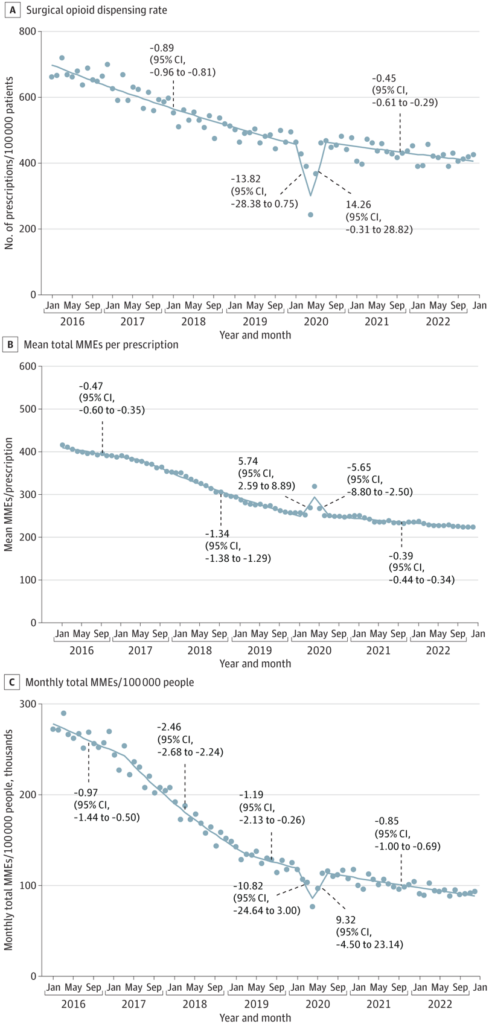That is the discovery of a Open JAMA Network paper for Zhang et al. (2023). The authors use 2016-2022 data from the IQVIA longitudinal prescription database, which claims to capture 92% of retail pharmacy prescriptions.
First, fewer opioid prescriptions were written (wide range):
Between January 2016 and December 2022, the monthly surgical opioid dispensing rate decreased from 661.2 to 426.0 prescriptions per 100,000 people (35.6%). This rate decreased by 0.89% (95% CI, −0.96% to −0.81%) per month between January 2016 and January 2020, declined sharply, and recovered during February to July 2020, and decreased by 0.45% (95% CI, −0.61% to −0.29%) monthly from August 2020 onwards
Additionally, when opioids were prescribed, the amount of opioids per prescription also decreased (intensive margin):
Total monthly average of MME [morphine milligram equivalents ] per prescription decreased from 414.0 to 222.0 prescriptions (approximately 44 pills containing 5 mg of hydrocodone) during January 2016 to December 2022 (46.4%). This amount decreased by 0.47% (95% CI, −0.60% to −0.35%) per month between January 2016 and May 2017 and by 1.34% (95% CI, −1 .38% to −1.29%) during May 2017 to January 2020. After increasing and decreasing between February and July 2020, this amount decreased by 0.39% (95% CI, −0. 44% to −0.34%) per month from August 2020 onwards.

You can read the full article. here.








